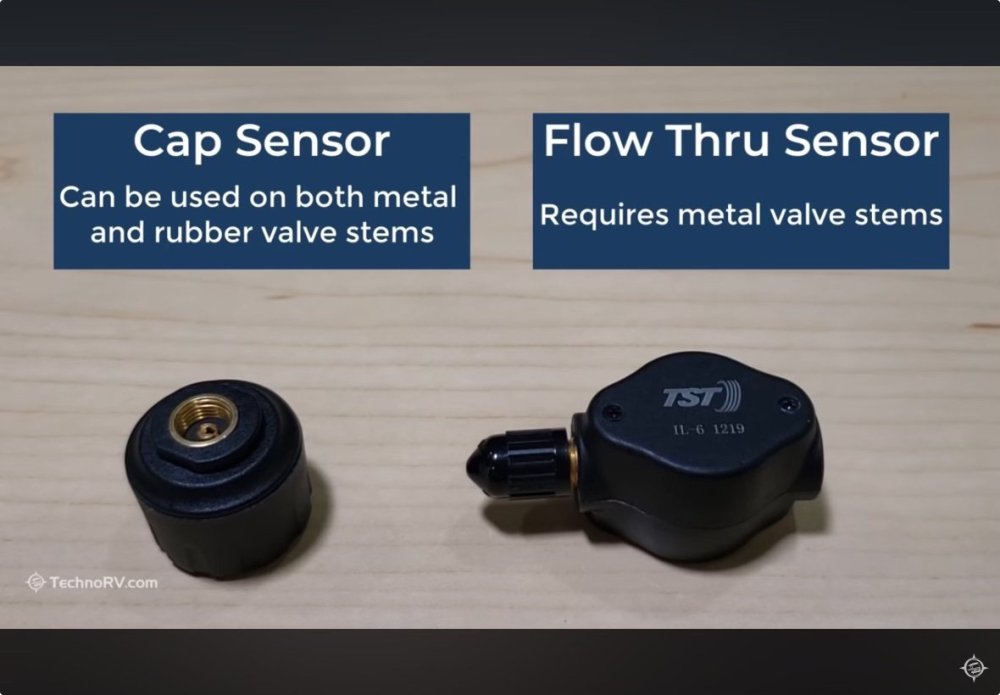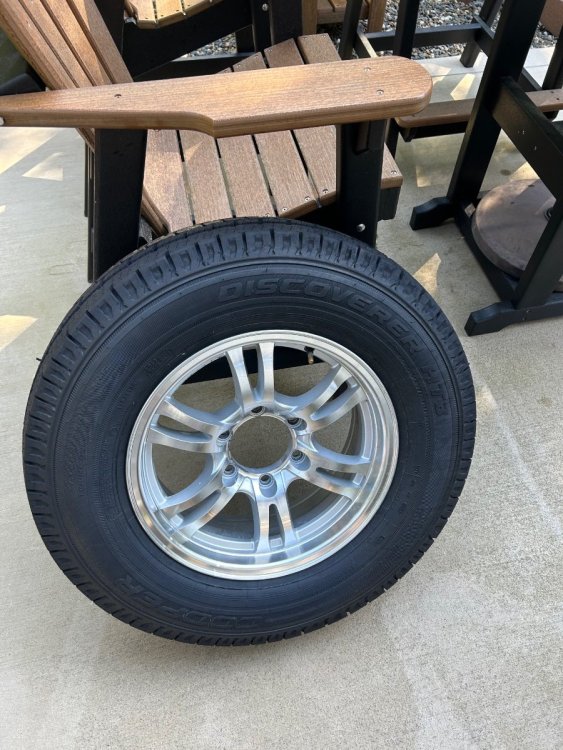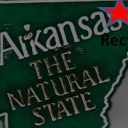Search the Community
Showing results for 'tpms'.
-

Brand of metal valve stems
Geronimo John replied to StillGame's topic in Mechanical & Technical Tips
That's interesting. I'm running a 2018 EEZTire TPMS as well. I purchased six sensors plus a spare so i could monitor Ollie and 2 spare tires. I'll go find my info and advise why I pulled them off my spare tires. Will be good to know for sure. More to follow.... GJ -
I have the EEZTire TPMS and both the spare tire on the Ollie and on my F-150 DO register with this system for both pressure and temperature. Bill
-

Flat Tire Preparation, Especially for Elite I Owners
jd1923 replied to Ron and Phyllis's topic in Towing an Oliver
@Ron and Phyllis the odds were against you, but with your TPMS alarm and your cool head in finding a good place to park, you really made the best of a bad situation. Good lesson you shared and we're glad to know you two are fine. 😂 Thinking back to the half dozen trailers I've owned, never going with a single axle. Needed a trailer for our dirt bikes years ago and looked hard and found a used 12 FT flatbed dual axle. Dual axles generally come on 14 FT trailers and longer, most are 16 FT. I've had blowouts on dual-axle trailers where you lose a fender but all else is good. Thanks @topgun2 for the Dewalt compressor link. I need to get one of these when we resume spending on the Oliver (need a long break). We are a Dewalt tool family, having 8-9 20V batteries between my son and us. I bring a Dewalt handheld leaf blower to blow dirt road dust off the Oliver and clean the camping mat. My son got me this for Christmas: Amazon.com: DEWALT 20V MAX* XR Leaf Blower, Cordless, Handheld, 125-MPH, 450-CFM, Tool Only (DCBL722B) : Patio, Lawn & Garden And you gotta have 1-2 of these for the campsite, or to change that tire at night if need be. I got everybody in the family one, so they would not take mine anymore: DEWALT 20V MAX LED Work Light, 100 Degree Pivoting Head, Up to 1000 Lumens of Brightness, Cordless (DCL050) - Amazon.com -

Flat Tire Preparation, Especially for Elite I Owners
Patriot replied to Ron and Phyllis's topic in Towing an Oliver
@Ron and PhyllisFirst glad that it all worked out safely for you. And it’s always a good idea to check your spare periodically for correct air pressure IF you don’t use a TPMS sensor on the spare. As a part of our go to gear we always carry a floor jack, a tire temporary plug kit and we also have a portable compressor on board. (link) Not an advocate of running a plugged tire, but it will at least get you to a repair shop in a pinch. Safe Travels and hope to see you at the rally! https://www.amazon.com/40047-400P-RV-Automatic-Portable-Compressor/dp/B004B68XGC/ref=sr_1_4?crid=2CXF2TAPW4C19&dib=eyJ2IjoiMSJ9.Eys-V0OIft8RXPo9KyhLYMtEzTC1gVkd12IQ8QX0XsWgXT4wr-aQ3UNywG3dZFL50DToSh3Wv0fob50yoNsmRcRcgHxwz-S78KIlhwHb4OurfKZ4F-OX6GE_l_t2Ba2Wm9JIf2X1wjtHcrSxXsdwRvI16QVHnK_hFafbhZh2ZL1BsmgAMTdvek0kOlCLCHBwPe_wNBjfFxmqyyLDMtbvJSqrRbyR2UA2dkC8wSKrKlA.YXfRIKzFhg2jMU9BN2Pr1w-HMX_z-NSR68nn8Ji7Nuk&dib_tag=se&keywords=rv+air+compressor&qid=1714030907&sprefix=Rv+air+%2Caps%2C118&sr=8-4 -
For a little bit further clarification: I called and spoke with Customer Service rep Maria at the TST Office in Cumming, Ga. (770) 889-9102. I asked her if rubber valve stems can be used with the 507 TPMS bottle cap style sensors? She said yes. She went on to say, that an application requiring flow through sensors, it would require metal valve stems. To their knowledge nothing has changed in the install instructions with regard to use of rubber stems with the bottle cap signal sender. Safe Travels!
-
A short follow up: I dropped off my (spare) tire/wheel today just to be sure that my local DCT had the metal stem I needed in stock. I have an appt Wednesday morning to have all 4 tires rotated, balanced and the remaining 4 new metal stems installed. They just could not squeeze me in today. Not a big deal, and fair enough as they were pretty slammed. They were kind enough to at least get my spare swapped out. No charge of course. I returned home, remounted the spare on the back of XPLOR. This precludes me having to remove the bike rack etc at DCT this Wednesday when I get the rest of the wheels done. This metal stem seems to be a bit lower profile or shorter than the OEM rubber stems which suits me fine. I am thinking it will keep the TST TPMS cap TPMS transmitter a little closer to the inside of the wheel away from road rockets. I am really liking the Cooper tires and as they appear to be wearing really well. I will replace them with a new this set next year. Very happy to have 16” rims as well. Cheers! Roll On!!
-
Just to be fair: I too have metal stems and have never had a problem. However, I never had a problem with rubber stems either. I think that metal stems usually make sense for those of us that have stem mounted TPMS primarily due to the reason John mentions above. But, if you tend to take your Ollie into really "wild" places where the stems are likely to be hit with rocks, deep ruts, brush, etc. then the rubber stems can be a bit more "forgiving" than the metal stems. Bill
-
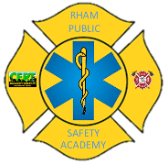
Brand of metal valve stems
Steph and Dud B replied to StillGame's topic in Mechanical & Technical Tips
Metal stems and TST TPMS since 2007. No issues so far. -
@Ronbrink All good points especially since TST has now revised their recommendation of metal stems vs rubber. Based on this I will reconsider not using the rubber stems and replace with metal sooner than later. I think it’s also important to not over tighten the TST TPMS cap when installing it. This could break the seal and cause a slow leak on either metal or rubber stems. It’s worthy noting that the metal stems still use a rubber seal which is still subject to leaking and failure.
-
We decided to go with metal valve stems 3 years ago. Shortly after doing so we had a flat, and the metal stem had failed.😣 I took XPLOR Hull #634 to our local discount tire shop and had all new rubber stems installed and all tires rotated and balanced. Zero issues since. We use the TST TPMS system and are very happy with it. The tech who does tires all day long said he sees more failures with metal stems than rubber. That was good enough advice for me. Cheers and Safe Travels!
-
Can anyone tell what breand of metal valve stems work well on our rims (2021 Elite II). I purchased a TST TPMS system and want to use metal stems. Had a local dealer install the metal stems. The TPMS sensors have been on three days. Today when checking the tires to see if the tpms read the same as my guage, one tire was a few pounds low. I removed the sensor, added air, then when I screwed the sensor back on there was a distinct air leak. Yjought it was the core, but it seems air is leaking where the stem meets the rim. must be a bad seal. So my thought is our rims may need a particular brand of stems? Monday moring i'll be on the phone with delaer.
-
FORD SUPER DUTY TRAILER MOUNTED CAMERA
Rolind replied to Wandering Sagebrush's topic in General Discussion
I was initially very interested in the ford wired backup camera, but was very hesitant bc I had to be hardwired to the trailer. Seemed like a lot of hassle for very little benefit. I currently have an after market tpms and the Oliver factory installed backup trailer camera. The monitor is a little small and it sure would be nice to have the backup camera on the trailer display on the truck head unit, but I am very happy with what I have. I find I only really use the backup camera for a few minutes when I back into a campsite or storage for our Oliver. The wired ford backup camera and tpms seems like a long run for a short slide! Just my humble opinion. -
It is the blue tooth app that monitors your TPMS, temp probs, LP level and other things. Mine quite working and I need to resync it, but I do not know where the controller is. It is an Oliver installed item. Maybe it was an option. I don't recall.
-

Tire pressure confusion - Legacy Elite 2 POLL
routlaw replied to John E Davies's topic in Towing an Oliver
Lots of good ideas and thoughts on this. Thanks. Just for conversation I will be a devils advocate "lightly" regarding tire inflation for both the TV and Ollie. But allow me to digress for a brief moment. Awhile back on an automotive forum, doesn't really matter which one but might have been a Tundra forum, there was a somewhat heated discussion regarding a gentleman who had gone from standard P rated tires to LT tires on his truck and asked what PSI should they be run. Sensible question but one fellow ripped the guy up on side and down the other claiming he should be running his tires full bore tilt at 80 PSI or risk a blowout and kill everybody on the highway. The answer struck me as a bit extreme given the research I had done on the subject to this point. Effectively it is true running tires at 80 PSI will reduce less heat build up due to less flexing and perhaps increasing gas mileage along the way, but is this the only safety factor of the equation to be considered? I have my doubts. What about braking, handling, maneuvering especially if in an emergency situation. At 80 PSI on lighter vehicles such as half ton trucks or Olivers there will not be enough tread on the road (the way the engineers and manufacturers designed the tire to operate). The tire chalk test bears this out too. Cutting to the chase, imagine having to swerve out of the way because some reckless driver runs a red light in front of you. Cornering and braking will not be optimum with over inflated tires and it compounds exponentially if towing a trailer. I'm certainly no expert on the subject but believe much depends on the individual vehicles and trailers and tires. What I can add from personal experience on a trip this past Sept from MT to southern UT with new LT tires. Ran my TV at 50 PSI and Oliver at 45 PSI. Truck being a tad bit heavier and loaded in the back with gear and tongue weight of trailer. Kept a close eye on heat and tire pressure build up with the TST TPMS and both did fine and this was driving through some 100º heat in SLC late afternoon. Thankfully no emergency maneuvering on the trip to test my theory. And for sure don't go up the gravel road to Green River Lakes in the Wind River Range with 80 PSI on either of your rigs. 🤣 -
I had DT install metal valve stems on all wheels last summer on a return trip from West Texas, had two rubber stem failures (with mounted TPMS devices) likely due to extreme heat at the time (110°+). Upon leaving, I went directly to a nearby Walmart and deflated the tires to 55 psi. That would be my guess.
-
I’ve never had any odd temperature readings on any of the four tires on my TST TPMS. I’ll be checking wheel temperature now too….
-
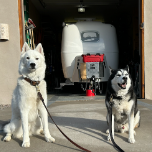
Tampa RV Supershow 2024, January 17 - 21
MAX Burner replied to SeaDawg's topic in General Discussion
Concur, 100%, @Mike and Carol. We actually bought our first TPMS at the RV Show here in '09! -

When to replace 2019 Elite II tires?
bugeyedriver replied to ScentFreeInSC's topic in Towing an Oliver
Topgun2 referred to the "date code" on each tire. Each tire will have a 4 digit number you can find on the sidewall. The first two numbers will be the week of the year and the last two will be the year. So, a "3222" code will tell you the tire was manufactured in the 32nd week of 2022. LT tires may show wear on the treads to indicate degradation, but ST tires treads can appear robust even after many, many miles, hiding the fact that they are "tired" and worn out. Failure to maintain proper inflation and loading within limits are the things that risk failure. An under inflated tire will result in excessive flexing of the sidewall as it rotates down to the bottom and bulges before swinging around the rest of the revolution. This repetitive motion may cause internal friction in the sidewall and overheating, leading to failure. Using a Tire Pressure Monitoring System (TPMS) is a great way to avoid this. The Wonder Egg gets new shoes whenever they are 6 years old. -

Tire pressure confusion - Legacy Elite 2 POLL
MAX Burner replied to John E Davies's topic in Towing an Oliver
Same here. For the same exact rationale that @Geronimo John explains. Keep in mind - the "generic" TPMS, configured correctly, will allow you time to find a safe place to come to rest if it's a "slow leak." OTOH, if you've just experienced a catastrophic tire failure, you may need to rely on the "good" axle (if you've got an LEII) to get the rig to a safe stopping location; or if single-axled - just enough time to stop safely where you're at. We've had the catastrophic blow-out scenario on a secondary road in southern Florida 15 or so years ago - two axles, no TPMS, never knew it happened until stopping many miles down the road. The second axle saved the day. -
Yes - Its all relative. By this I mean if you check both the hubs (covered or uncovered) and the rims near the hubs on a regular basis with a TPMS or a hand held temperature sensor, you will soon "learn" what your "normal" readings are for your rig. Deviations from these "normal" readings should send you on a mission to find the cause of the difference in temperature. The answer may be simple - the sun is shining on that side of the camper or your tire pressure is too low or the road you're traveling is severely "crowned" in the center or you've been "riding" your brakes in traffic or going down a long hill. Or, it could be the first signs of bearing failure or a "dragging/sticking" brake. I've never had an unexplained "problem" with my Ollie (yet), but, on a couple of RV's previous to the Ollie both the TPMS and checking at each stop really saved my bacon. Bill
-
Question - has anyone determined if the TPMS temperature measurement will track (albeit delayed) bearing heating due to bearing wear and impending failure? I like the hub caps and use bearing buddies along with periodic bearing repacking to minimize the chance of bearing failure. And yes, the bearings were replaced with genuine Timken's before our Alaska adventure.
-
Our Oliver Elite 2 #1125 was one of the 25 or so units that had balance beads in the tires from the factory. My understanding is that the wheel/tire combos arrived at the mother ship already mounted and with the balance beads installed, a fact that was unknown to Oliver at the time. Once this fact became know to OTT, they mitigated the problem by sending out a set of 5 valves that have a sort of filter screen to prevent the balance beads from plugging up the valve mechanism which would result in the valve being held open and lead to loss of tire pressure. OTT also provided a visa debit card loaded with $25 to cover the cost of a tire servicer to replace the valves. We did the replacement last year and assumed all would be fine. The trailer has been sitting for about 2 months, a couple of weeks ago when I was prepping it for a voyage I discovered the TPMS was not functioning due to the batteries in the sending units having gone bad so I pulled out my trusty tire gauge and set out to check my tire pressures, only to find that when I removed the TPMS (caps) that the air was flowing freely out the valve stem, exactly as it had been doing before installing the "filter" valves meant to solve this problem. I immediately replaced the cap to prevent any further pressure loss, kicking the tires to determine if they seemed inflated enough for the 60 mile journey to the tire shop, which they were. Discount Tire in Montrose, Colorado was prompt to break down the tires, including the spare, thoroughly clean out the balance beads, replace all the valves, balance the tires the normal way (without balance beads) and remount the tires on the trailer, took about 60 minutes and they had 4 techs working on it at the same time. When I went to pay the bill the service manager smiled and said, 'Don't worry about it, just come to see us the next time you need tires." I told him that they had nothing to do with the balance beads installation, he acknowledged that fact but held his ground and refused payment. What a wonderful experience. To any of you who have had to deal with the Balance Bead issue, the solution of the filter valves is inadequate, the tires need to be remove from the rims and the Balance Beads physically cleaned out...Be Aware!!
-

Add a Device to the Rear Camera Switch
Ray Kimsey replied to GeoffChapman's topic in Ollie Modifications
I did this, but I connected the TPMS booster in the rear overhead cabinet. I removed the whiteboard on the right to get access to the cables then connected the camera wire with the booster and ground wire to the ground. Worked without a problem. -

Add a Device to the Rear Camera Switch
rich.dev replied to GeoffChapman's topic in Ollie Modifications
Doesn’t answer your question, but I use the TST 507 TPMS and no need for the booster. -
We have had a fast introduction to our new-to-us Elite I (hull 731) since we picked it up over Labor Day weekend in McComb, Ill. We are four years into retirement and felt ready to do some camping and to get out and see more of our country. We thought we could fit camping trips in between our life with our many local grandchildren – and help with visits to our non-local grandchildren. From our home in Pittsburgh, we’ve now taken 5 trips, visited 7 states (from Illinois to NY to Tennessee), travelled 3400 miles and camped for 13 nights. This has given us a deep dive into the Oliver camping world. I thought we’d share our first impressions and ask some questions. Overall, it is evident that the Oliver is a complex and capable trailer. We love it!! We are glad for our purchase and our start into some years (God willing) of camping adventures. The Oliver online forums and the Oliver University have been a goldmine of advice. Thanks to you all, more than once!! As we got started, we had to: · Upgrade our TV capabilities, adding a class 3 hitch, air bags and a brake controller to our 2022 V6 GMC Canyon. All this was new to me, and I’m glad to say we’ve had no towing difficulties. · Learn how to tow. I got my first lessons from our seller at pickup, a *great* guy. Caution and care were important as we started. As of this writing, we’ve been through the Adirondacks and the Smokies at least once. · Learn how to travel with our Cocker. ‘Brecon’ goes with us, almost always. But she does not sleep on our bed, so… the floor by the door proved perfect for her bed, leaving the isle free to walk to the bathroom in the middle of the night. She travels well, and is a sweet companion. · Learn the basic systems, including parking, electrical, propane, solar, water, sewage, heat, and solar. We were told at sale that both our previous owners sold after 1500 miles in part because of the complexity of these units. We sympathize! · Learn the basics of finding places to camp. We studied up on federal, state and private options, including Harvest Hosts and Hipcamp. We quickly concluded that we love remote camping, so we had to learn how to boondock. Hipcamp has been our favorite. · Learn how to live in tight quarters! We’ve been married for 46 good years, but this is a new season. As soon as we had a week of nights or so under our belt, we began to shape our Ollie to fit us. All these mods are reversable, but to date we have: · Swapped out the Furrion rear view camera (with a dim, small, fuzzy image) for a Haloview BT7 1080p Backup Camera. I used the wiring for the Furrion and relocated the camera below the Oliver light, temp caulking the previous Furrion holes. The difference was well worth it. · Taken the TV and its mount out. We don’t use it. · Taken the rail btw the front dinette seat and the rear dinette seat out. The added headroom in sleeping is well worth it. · Added 6 Tireminder TPMS transmitters. I may add 2 more to our spare tires. · Made solar work for at least two or three night stays offgrid. 8 of our first 13 nights were remote (by choice) with no hookups, so we learned to keep electrical use to a minimum, turned off the inverter when off shore-power, and added a 100 watt portable solar panel to our 230 watt rooftop panels. As we sit here and think back on our first weeks with the camper, what have we liked, what do we love? · Without exception, we have enjoyed the people we have met. This country has a lot of great people, many of them living out in the country. · The Oliver has made visiting our large family and other friends a cinch! We happily sleep in our trailer! · We are pleased with the Oliver itself, with its aesthetics, its evident craftsmanship, and its ‘mod-ability’. It fits us well. · We love being warm and snug and dry inside when it is cold and windy and wet outside. · We love waking up to sunrises streaming in the windows. We love going to sleep with night breezes across our faces. We love the hoots of the owls and the barking of the coyotes in the hills. We’ve loved sitting pondside and watching snapping turtles cruise in the evening, the swallows as they dart, and the fish as they leap. · We love the quiet and the calm of the countryside and the hills. · We love the stars deep into the nights in the countryside. We travel with a small telescope and binoculars. The stars have long been a love. Geoff and Becca Chapman
- 5 replies
-
- 13
-

-

-



